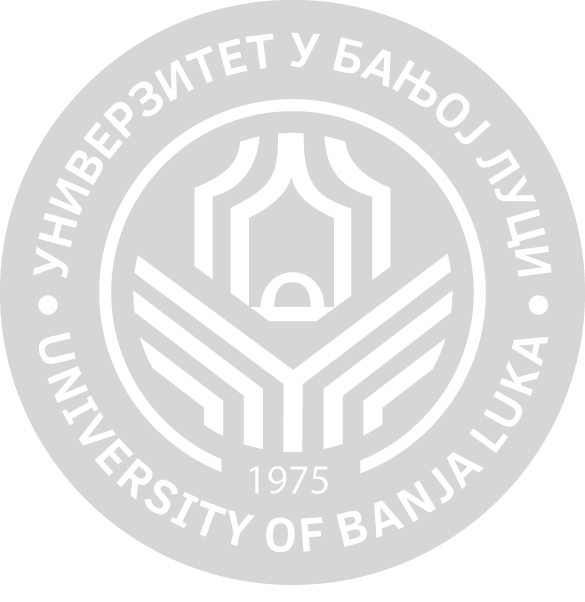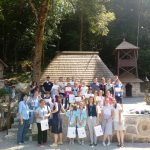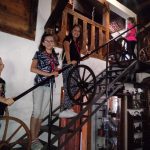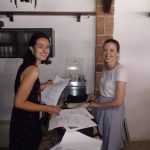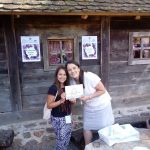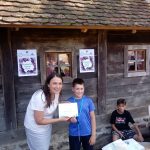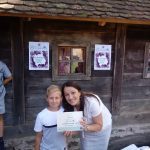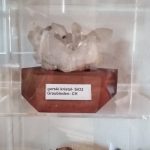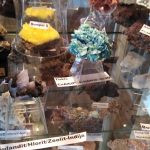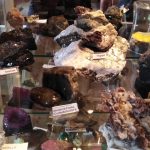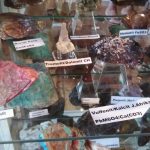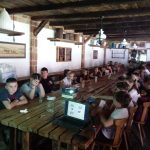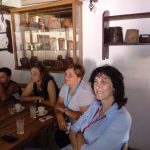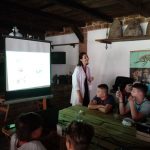
Ove godine, program o sirovinama, RM@schools se širi i u Bosni i Hercegovini zahvaljujući, “ESEE education initiatives” projektu (grant 10009) koji je podržan od strane „EIT raw materials“.
Prirodno-matematički fakultet, Univerziteta u Banjoj Luci je jedan od promotera ovog projekta. Ispred studijskog programa Hemija održana je jednodnevna intenzivna ljetnja škola o sirovinama, u etno selu-muzeju „Ljubačke doline“. Muzej sadrži nekoliko tematskih izložbenih prostorija, a u jednoj od njih se nalazi i impresivna kolekcija prirodnih minerala.
Program ljetnje škole je uključivao interaktivni čas hemije održan u polu-otvorenoj seminarskoj sali. Učenici su zatim bili podjeljeni u grupe i imali kratko predavanje o mineralima, koje su zahvaljujući kolekciji u muzeju mogli vidjeti, dodirnuti i upoznati se sa nekim od fizičkih osobina minerala. Po završetku predavanja učenici su radili test s ciljem da se provjeri koliko su informacija sa oba predavanja upamtili. Rezultati testa su bili iznenađujuće visoki (skoro 80% tačnih odgovora), pa je proglašeno devet RM@schools šampiona, što nam pokazuje da sirovine mogu da privuku pažnju učenika uzrasta 11-12 godina, ukoliko se predstave na interesantan i interaktivan način. Najbitnije od svega, učenicima je prezentovana karta Bosne i Hercegovine koja pokazuje sva nalazišta u državi, kao što su: gvožđe, boksit, olovo, cink, so, pirofilit, bentonit, kaolinit, kreč, ugalj…
Takođe, projekat RM@schools – Ljubačke doline – 2019 je imao za cilj promovisanje mira i razumjevanja kroz nauku, te su bili prisutni učenici sva tri naroda Bosne i Hercegovine.
Ukupno, ljetnjoj školi je prisustvovao 31 učenik osnovnih škola „Ivan Goran Kovačić“ iz Banje Luke i „Dositej Obradović“ iz Prijedora (područne škole Rizvanovići i Hambarine), regiona sa dugom rudarskom tradicijom.
Sa velikim porastom međunarodnih ulaganja u rudnike Bosne i Hercegovine, ovakav tip projekata bi trebalo da motiviše djecu kako bi se u budućnosti obrazovali u inžinjere, hemičare, geologe, ekologe,… koji bi radili u internacionalnim ili nacionalnim kompanijama koje se bave sirovinama, te da upravo oni budu motivisani za očuvanje okoline svoje zemlje, dok rade na maksimalnom razvoju zemlje kroz eksploataciju prirodnih resursa.
“RM@schools” summer school first time in Bosnia and Herzegovina
The RM@schools program is spreading over the Bosnia and Herzegovina this year thanks to the support of the EIT raw materials-funded project “ESEE education initiatives” (grant 10009).
The task partner promoting it is the University of Banja Luka, Faculty of Science. Their Chemistry Department team has organized a one-day intensive summer school on a very creative place. In particular, the school was held in “Ljubačke doline – ethno village/museum”. The museum holds numerous thematic exhibitions dispersed in different rooms, one of them being the natural minerals collection. The program therefore included an interactive chemistry class held on semi-open air seminar room, after which the children were divided into groups and had a demonstrative short course in minerals getting familiar with an impressive collection at the museum. They had a test on the subjects they learned and selection of the RM@schools-champion which was very motivating. The results of the test had been quite high and nearly all the pupils had over 80% correct answers, showing that, if taught in the interesting and interactive way, the raw materials can indeed get the attention of the 11-12 years old age group.
In total 31 pupils and 2 teachers had participated from 2 schools. One school was selected from the Banja Luka city (Bosnian second largest city) and the other school was intentionally chosen from the remote area with mining history-the Prijedor region (iron- mining tradition). Also, this opportunity was used to promote peace and understanding so the groups had a nice balance of children belonging to three Bosnian major ethnic groups as well.
Finally, most importantly, the children were presented with the lively presentations of maps showing them a very rich Bosnian natural deposits like: iron, bauxite, lead, zinc, copper, salt, pyrophyllite, bentonite, kaolinite, lime, coal etc. With intensive increase in foreign investment in Bosnian mining industry, programs like this should lead to the grooming of the young experts in the future, who would be available as the engineers, chemists, geologists, environmentalist working in international or national companies dealing with raw materials. The best long term impact will be that they will be the most motivated ones to preserve the nature and use the green mining to protect their country while bringing about the most of the economical development through the exploitation of the natural resources.
